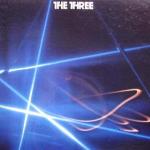
More Jazz Recordings Featuring the Piano
More Commentaries and Reviews for Jazz Piano Recordings
Sonic Grade: B
We haven’t played a copy of this record in years, but back in the day we liked it, so let’s call it a “B” with the caveat that the older the review, the more likely we are to have changed our minds.
The following notes were added in 2023. The original review can be seen just below them.
We should point out that the original Japanese pressings are clearly better sounding than any of the Super-Cut Analogue Disks that were pressed at RTI, regardless of the cutting speed.
I remember auditioning the 33 RPM recut that had been done in 1995. I was a big fan of the album in those days, and I had at least one and maybe more than one authentic Japanese pressings of the album in my collection. I still own the Three Blind Mice CDs of a number of titles as well.
It was no contest, the early pressings were obviously better in every way. I was selling heavy vinyl back then, and that’s what I had to sell, so I raved about the sound of the RTI-pressed reissues and sold plenty of them. I never bothered to point out that they were not as good as the originals. They were good and that was pretty much all I was going to say about them.
The authentic Japanese pressings were expensive to buy and very hard to find. Although they were better sounding, anyone buying the new pressings was likely to be happy with them, and that was good enough for the business model of Better Records at the time.
What accounts for the fall-off in sound quality from the earlier pressings to the reissues, remastered in Japan and then pressed at RTI, is anyone’s guess.
Some of that reduction results from the substandard sound that virtually all RTI pressings tend to have, a subject we discussed in some detail in this commentary from years back.
As you may have read, we stopped selling new Heavy Vinyl titles in 2007, eliminating the temptation to say nice things about records that are in print and reasonably priced, but not really as good as they should be.
Our commentary for Blue gets at all these issues. The Rhino pressing is a good record, but not nearly as good as it should be, and hopelessly outclassed by the good original pressings, the ones cut by the formerly excellent engineer, Bernie Grundman.
We made the decision then and there to simply raise our standards, and that meant the end of us offering Heavy Vinyl pressings to our customers.
We like to sell records that are amazing sounding, not records that can easily be beaten by other pressings you may happen to have already, or probably could manage to acquire on your own.
Our White Hot Stamper section is the place to go if you are looking for records that are dramatically better sounding than any pressings you could hope to find on your own. They are guaranteed to blow your mind, or your money back.
Our Original Review from Circa 2004
This 45 RPM Three Blind Mice 180g Double LP has DEMO DISC SOUND! The 33 RPM versions were pretty darn amazing but these 45s take the sound of this recording to an entirely new level.
There are a couple of quite obvious benefits to mastering this music at 45 RPM. One is that Yamamoto tends to use his right hand in a percussive manner, which creates tracking problems on most any set up. At 45 RPM the mastering engineer is able to cut those transients, full of difficult to deal with harmonics, much more cleanly and accurately. The result is a sense of “ease” that you don’t hear on the 33.
It’s a bit like having a slightly underpowered system which makes loud passages or transients seem to be right at the edge of distortion, and then switching to a more powerful amplifier and hearing those passages reproduced with the relaxed quality that more headroom gives you.
Also the sound opens up quite a bit on these 45s so that more of the room ambience is heard. The Japanese are famous for their close-miking, and sometimes the sense of real musicians in a real space is lacking. Here much of that quality is restored.
Yamamoto is one of the few Japanese jazz players who has any feel for the medium. If you like bluesy jazz piano with amazingly dynamic sound, you can’t go wrong here.
(more…)


 More of the Music of Hampton Hawes
More of the Music of Hampton Hawes
 Hot Stamper Pressings of Piano Jazz Albums Available Now
Hot Stamper Pressings of Piano Jazz Albums Available Now




